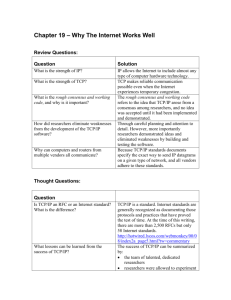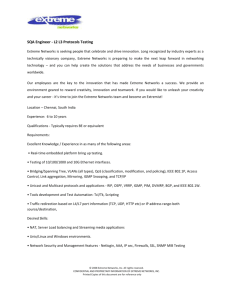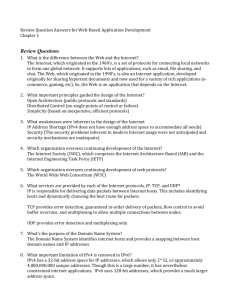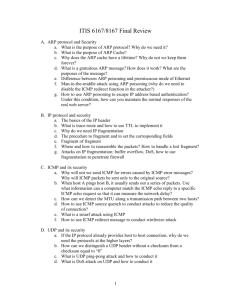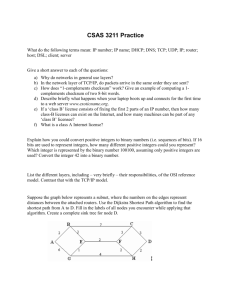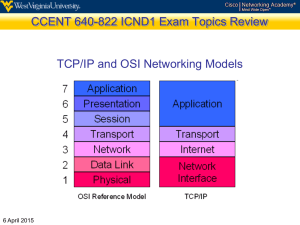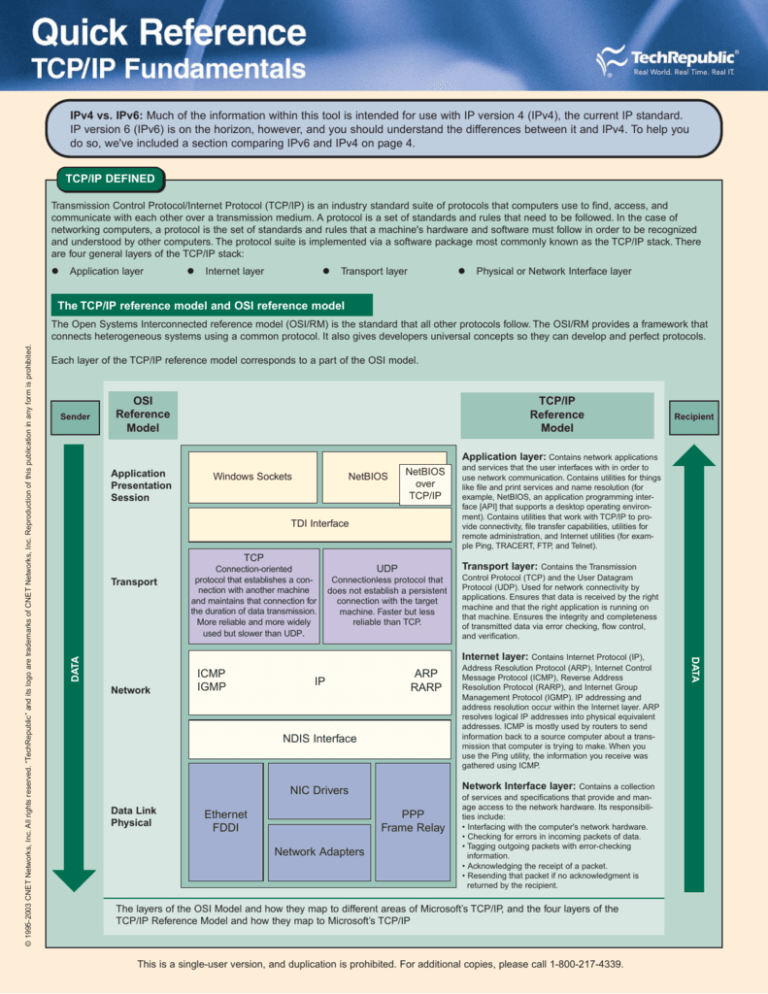
IPv4 vs. IPv6: Much of the information within this tool is intended for use with IP version 4 (IPv4), the current IP standard.
IP version 6 (IPv6) is on the horizon, however, and you should understand the differences between it and IPv4. To help you
do so, we've included a section comparing IPv6 and IPv4 on page 4.
TCP/IP DEFINED
Transmission Control Protocol/Internet Protocol (TCP/IP) is an industry standard suite of protocols that computers use to find, access, and
communicate with each other over a transmission medium. A protocol is a set of standards and rules that need to be followed. In the case of
networking computers, a protocol is the set of standards and rules that a machine's hardware and software must follow in order to be recognized
and understood by other computers. The protocol suite is implemented via a software package most commonly known as the TCP/IP stack. There
are four general layers of the TCP/IP stack:
Application layer
Internet layer
Transport layer
Physical or Network Interface layer
The TCP/IP reference model and OSI reference model
Each layer of the TCP/IP reference model corresponds to a part of the OSI model.
Sender
OSI
Reference
Model
TCP/IP
Reference
Model
Recipient
Application layer: Contains network applications
Application
Presentation
Session
Windows Sockets
NetBIOS
NetBIOS
over
TCP/IP
TDI Interface
TCP
DATA
Transport
Network
Connection-oriented
protocol that establishes a connection with another machine
and maintains that connection for
the duration of data transmission.
More reliable and more widely
used but slower than UDP.
ICMP
IGMP
Transport layer: Contains the Transmission
UDP
Connectionless protocol that
does not establish a persistent
connection with the target
machine. Faster but less
reliable than TCP.
IP
ARP
RARP
NDIS Interface
Ethernet
FDDI
PPP
Frame Relay
Network Adapters
Control Protocol (TCP) and the User Datagram
Protocol (UDP). Used for network connectivity by
applications. Ensures that data is received by the right
machine and that the right application is running on
that machine. Ensures the integrity and completeness
of transmitted data via error checking, flow control,
and verification.
Internet layer: Contains Internet Protocol (IP),
Address Resolution Protocol (ARP), Internet Control
Message Protocol (ICMP), Reverse Address
Resolution Protocol (RARP), and Internet Group
Management Protocol (IGMP). IP addressing and
address resolution occur within the Internet layer. ARP
resolves logical IP addresses into physical equivalent
addresses. ICMP is mostly used by routers to send
information back to a source computer about a transmission that computer is trying to make. When you
use the Ping utility, the information you receive was
gathered using ICMP.
Network Interface layer: Contains a collection
NIC Drivers
Data Link
Physical
and services that the user interfaces with in order to
use network communication. Contains utilities for things
like file and print services and name resolution (for
example, NetBIOS, an application programming interface [API] that supports a desktop operating environment). Contains utilities that work with TCP/IP to provide connectivity, file transfer capabilities, utilities for
remote administration, and Internet utilities (for example Ping, TRACERT, FTP, and Telnet).
of services and specifications that provide and manage access to the network hardware. Its responsibilities include:
• Interfacing with the computer's network hardware.
• Checking for errors in incoming packets of data.
• Tagging outgoing packets with error-checking
information.
• Acknowledging the receipt of a packet.
• Resending that packet if no acknowledgment is
returned by the recipient.
The layers of the OSI Model and how they map to different areas of Microsoft’s TCP/IP, and the four layers of the
TCP/IP Reference Model and how they map to Microsoft’s TCP/IP
This is a single-user version, and duplication is prohibited. For additional copies, please call 1-800-217-4339.
DATA
© 1995-2003 CNET Networks, Inc. All rights reserved. “TechRepublic” and its logo are trademarks of CNET Networks, Inc. Reproduction of this publication in any form is prohibited.
The Open Systems Interconnected reference model (OSI/RM) is the standard that all other protocols follow. The OSI/RM provides a framework that
connects heterogeneous systems using a common protocol. It also gives developers universal concepts so they can develop and perfect protocols.





